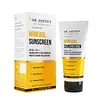What's inside
What's inside
 Key Ingredients
Key Ingredients

 Benefits
Benefits

 Concerns
Concerns

 Ingredients Side-by-side
Ingredients Side-by-side

Water
Skin ConditioningEthylhexyl Salicylate
UV AbsorberCyclohexasiloxane
EmollientNiacinamide
SmoothingGlycerin
HumectantButyl Methoxydibenzoylmethane
UV AbsorberOctocrylene
UV AbsorberPhenylbenzimidazole Sulfonic Acid
UV AbsorberSilica
AbrasiveGlycol Stearate
EmollientStearic Acid
CleansingPEG-100 Stearate
Titanium Dioxide
Cosmetic ColorantCarbomer
Emulsion StabilisingPotassium Hydroxide
BufferingAcrylates Crosspolymer
AbsorbentDimethicone
EmollientSodium Ascorbyl Phosphate
AntioxidantCystine
MaskingGlycine
BufferingSodium PCA
HumectantTocopheryl Acetate
AntioxidantPyridoxine Hcl
Skin ConditioningGlyceryl Stearate
EmollientCetyl Alcohol
EmollientParfum
MaskingHydroxystearic Acid
CleansingSodium Hydroxide
BufferingPhenoxyethanol
PreservativeMethylparaben
PreservativeCyclomethicone
EmollientPropylparaben
PreservativeCyclopentasiloxane
EmollientDimethiconol
EmollientDisodium EDTA
BHT
AntioxidantStearamide Amp
Aluminum Hydroxide
EmollientSodium Carbonate
BufferingSodium Chloride
MaskingPalmitic Acid
EmollientArachidic Acid
CleansingWater, Ethylhexyl Salicylate, Cyclohexasiloxane, Niacinamide, Glycerin, Butyl Methoxydibenzoylmethane, Octocrylene, Phenylbenzimidazole Sulfonic Acid, Silica, Glycol Stearate, Stearic Acid, PEG-100 Stearate, Titanium Dioxide, Carbomer, Potassium Hydroxide, Acrylates Crosspolymer, Dimethicone, Sodium Ascorbyl Phosphate, Cystine, Glycine, Sodium PCA, Tocopheryl Acetate, Pyridoxine Hcl, Glyceryl Stearate, Cetyl Alcohol, Parfum, Hydroxystearic Acid, Sodium Hydroxide, Phenoxyethanol, Methylparaben, Cyclomethicone, Propylparaben, Cyclopentasiloxane, Dimethiconol, Disodium EDTA, BHT, Stearamide Amp, Aluminum Hydroxide, Sodium Carbonate, Sodium Chloride, Palmitic Acid, Arachidic Acid
Water
Skin ConditioningZinc Oxide
Cosmetic ColorantC12-15 Alkyl Benzoate
AntimicrobialIsostearic Acid
CleansingPolyhydroxystearic Acid
EmulsifyingCyclopentasiloxane
EmollientPEG/PPG-18/18 Dimethicone
EmulsifyingCaprylyl Methicone
Skin ConditioningPEG-12 Dimethicone/PPG-20 Crosspolymer
Silica
AbrasiveGlycerin
HumectantDimethicone/Vinyl Dimethicone Crosspolymer
Skin ConditioningCetyl PEG/PPG-10/1 Dimethicone
EmulsifyingSodium Chloride
MaskingPolymethylsilsesquioxane
Caprylyl Glycol
EmollientMethylpropanediol
SolventDidecyldimonium Chloride
EmulsifyingPolyquaternium-80
CleansingXanthan Gum
EmulsifyingMagnesium Aluminum Silicate
AbsorbentWater, Zinc Oxide, C12-15 Alkyl Benzoate, Isostearic Acid, Polyhydroxystearic Acid, Cyclopentasiloxane, PEG/PPG-18/18 Dimethicone, Caprylyl Methicone, PEG-12 Dimethicone/PPG-20 Crosspolymer, Silica, Glycerin, Dimethicone/Vinyl Dimethicone Crosspolymer, Cetyl PEG/PPG-10/1 Dimethicone, Sodium Chloride, Polymethylsilsesquioxane, Caprylyl Glycol, Methylpropanediol, Didecyldimonium Chloride, Polyquaternium-80, Xanthan Gum, Magnesium Aluminum Silicate
Ingredients Explained
These ingredients are found in both products.
Ingredients higher up in an ingredient list are typically present in a larger amount.
Cyclopentasiloxane, or D5, is a silicone used to improve texture of products and trap moisture.
D5 is considered lightweight and volatile. Volatile means it evaporates quickly after application. Once evaporated, D5 leaves a thin barrier that helps keep skin hydrated.
It is also an emollient. Emollients help soften the skin and prevent water loss. Silicones create a silky texture in products. D5 helps other ingredients become more spreadable.
Studies show D5 is safe to use in skincare products. We recommend speaking with a skincare professional if you have concerns.
Learn more about CyclopentasiloxaneGlycerin is already naturally found in your skin. It helps moisturize and protect your skin.
A study from 2016 found glycerin to be more effective as a humectant than AHAs and hyaluronic acid.
As a humectant, it helps the skin stay hydrated by pulling moisture to your skin. The low molecular weight of glycerin allows it to pull moisture into the deeper layers of your skin.
Hydrated skin improves your skin barrier; Your skin barrier helps protect against irritants and bacteria.
Glycerin has also been found to have antimicrobial and antiviral properties. Due to these properties, glycerin is often used in wound and burn treatments.
In cosmetics, glycerin is usually derived from plants such as soybean or palm. However, it can also be sourced from animals, such as tallow or animal fat.
This ingredient is organic, colorless, odorless, and non-toxic.
Glycerin is the name for this ingredient in American English. British English uses Glycerol/Glycerine.
Learn more about GlycerinSilica, also known as silicon dioxide, is a naturally occurring mineral. It is used as a fine, spherical, and porous powder in cosmetics.
Though it has exfoliant properties, the function of silica varies depending on the product.
The unique structure of silica enhances the spreadability and adds smoothness, making it a great texture enhancer.
It is also used as an active carrier, emulsifier, and mattifier due to its ability to absorb excess oil.
In some products, tiny microneedles called spicules are made from silica or hydrolyzed sponge. When you rub them in, they lightly polish away dead skin layers and enhance the penetration of active ingredients.
Learn more about SilicaChances are, you eat sodium chloride every day. Sodium Chloride is also known as table salt.
This ingredient has many purposes in skincare: thickener, emulsifier, and exfoliator.
You'll most likely find this ingredient in cleansers where it is used to create a gel-like texture. As an emulsifier, it also prevents ingredients from separating.
There is much debate on whether this ingredient is comedogenic. The short answer - comedogenic ratings don't tell the whole story. Learn more about comegodenic ratings here.
The concensus about this ingredient causing acne seems to be divided. Research is needed to understand if this ingredient does cause acne.
Scrubs may use salt as the primary exfoliating ingredient.
Learn more about Sodium ChlorideWater. It's the most common cosmetic ingredient of all. You'll usually see it at the top of ingredient lists, meaning that it makes up the largest part of the product.
So why is it so popular? Water most often acts as a solvent - this means that it helps dissolve other ingredients into the formulation.
You'll also recognize water as that liquid we all need to stay alive. If you see this, drink a glass of water. Stay hydrated!
Learn more about Water